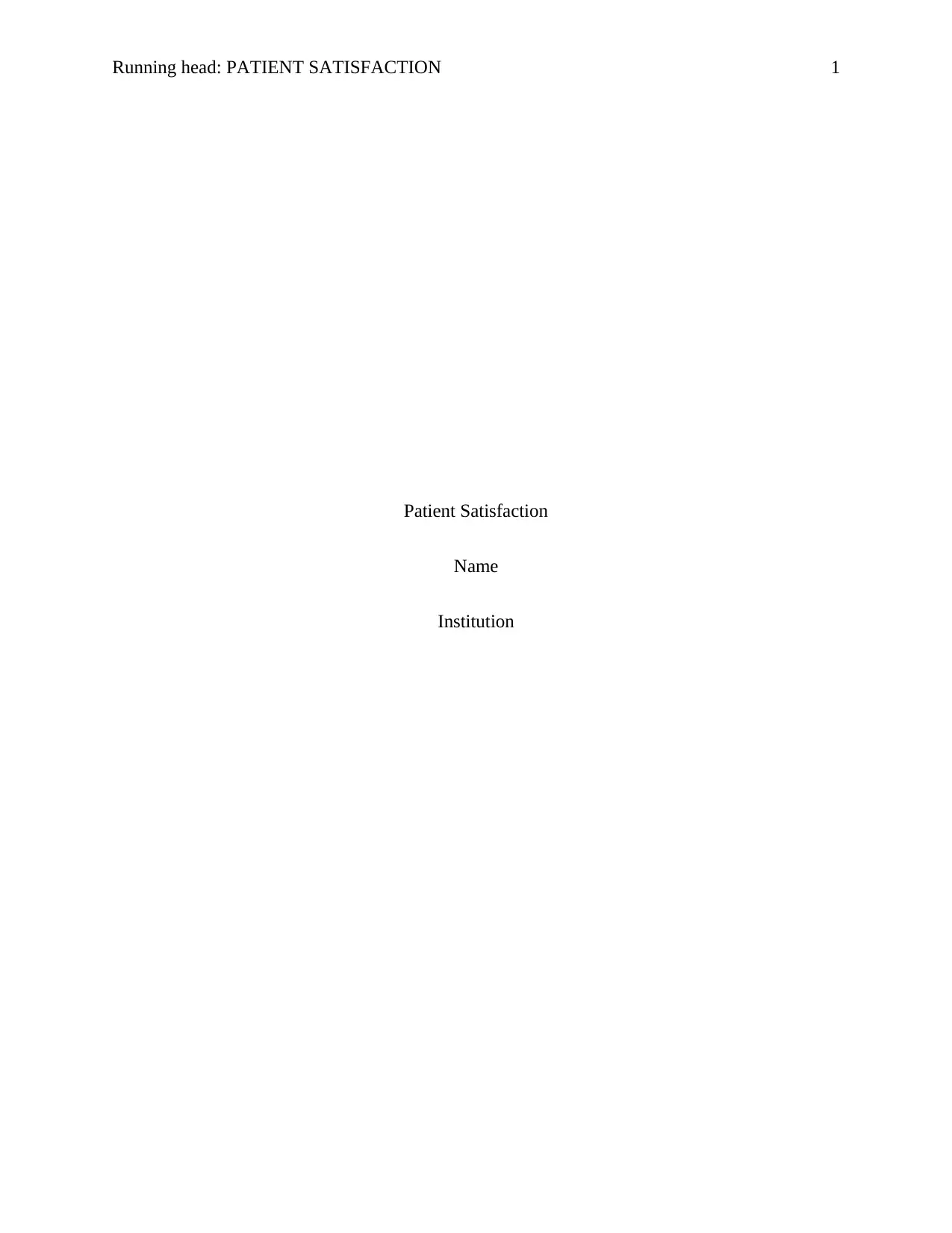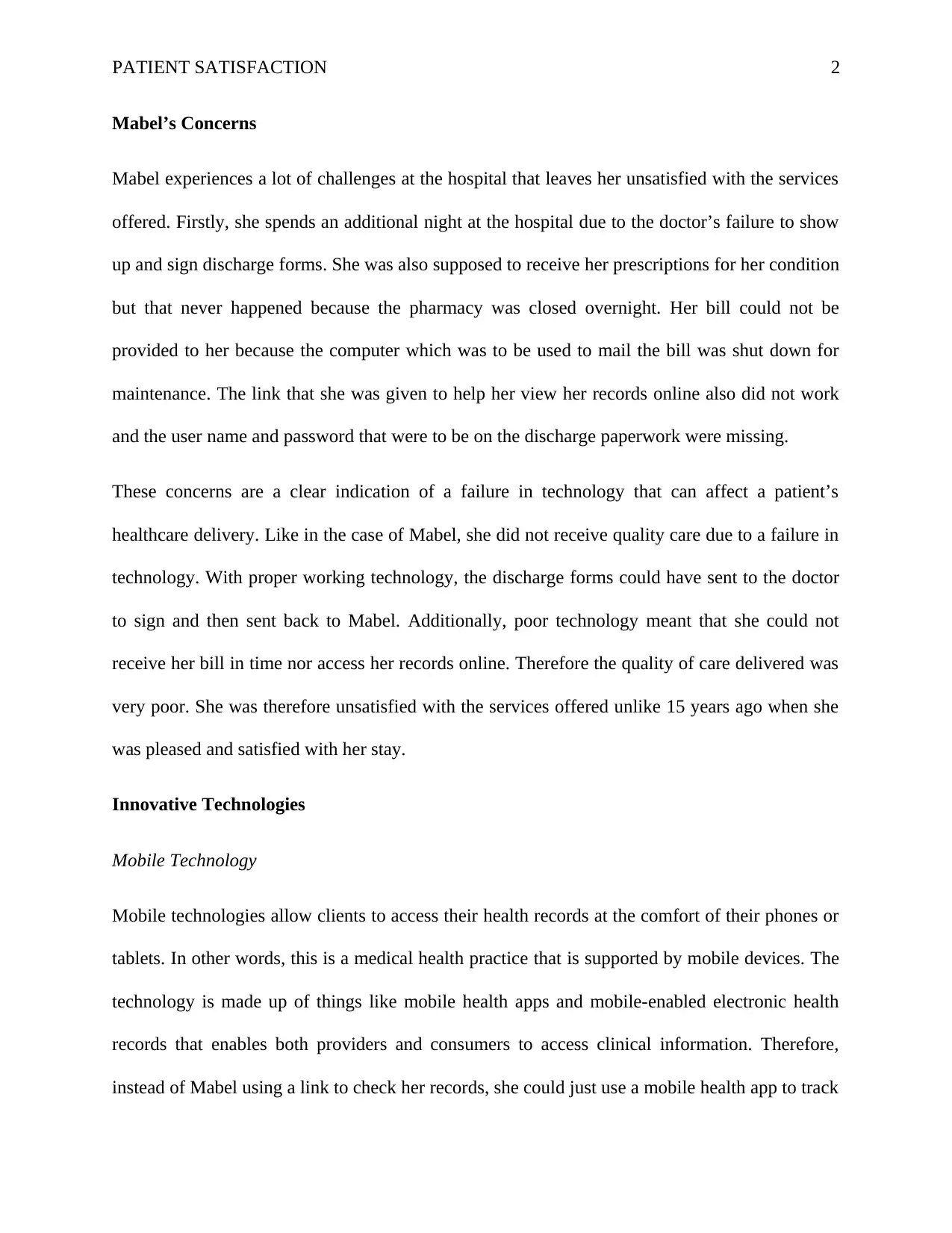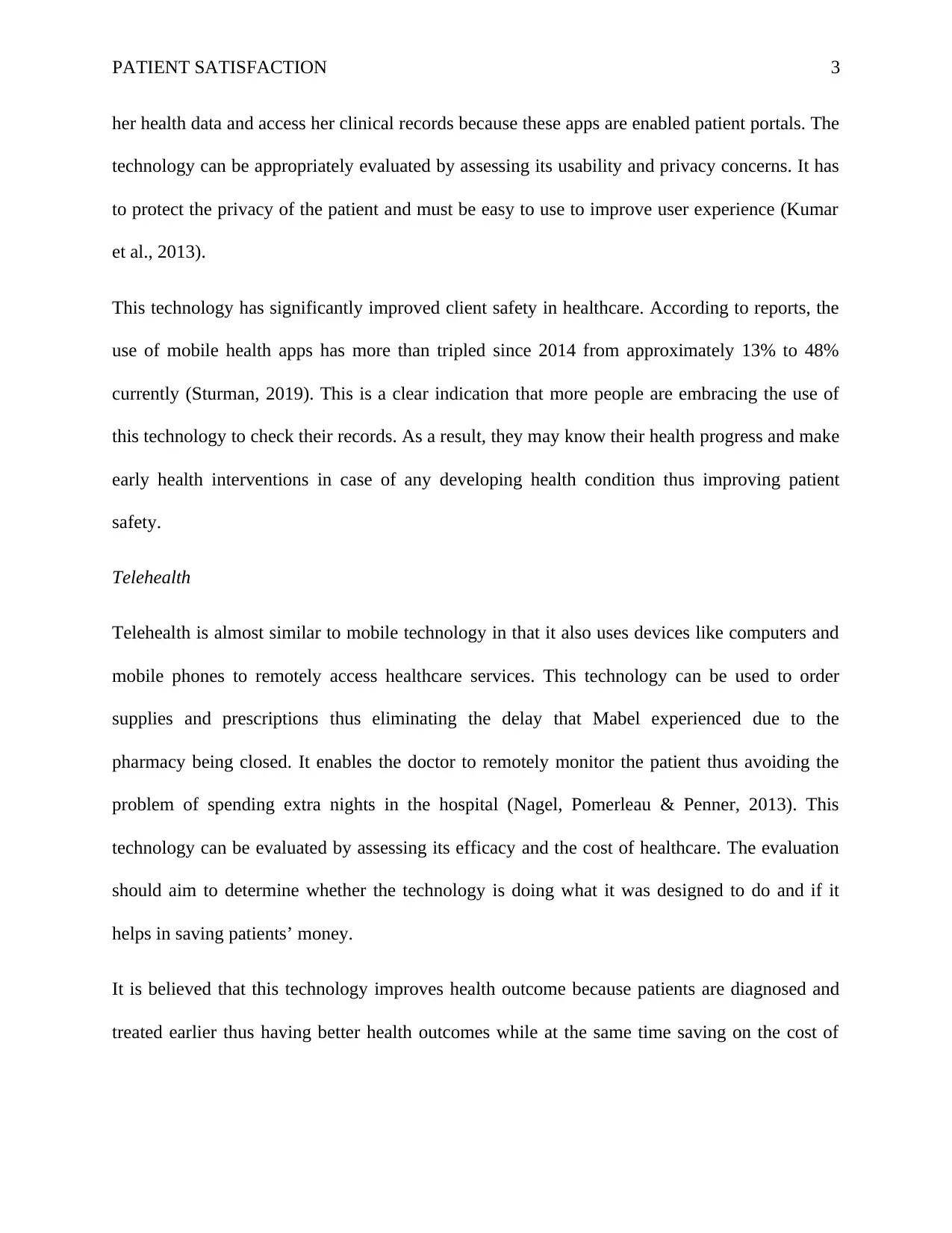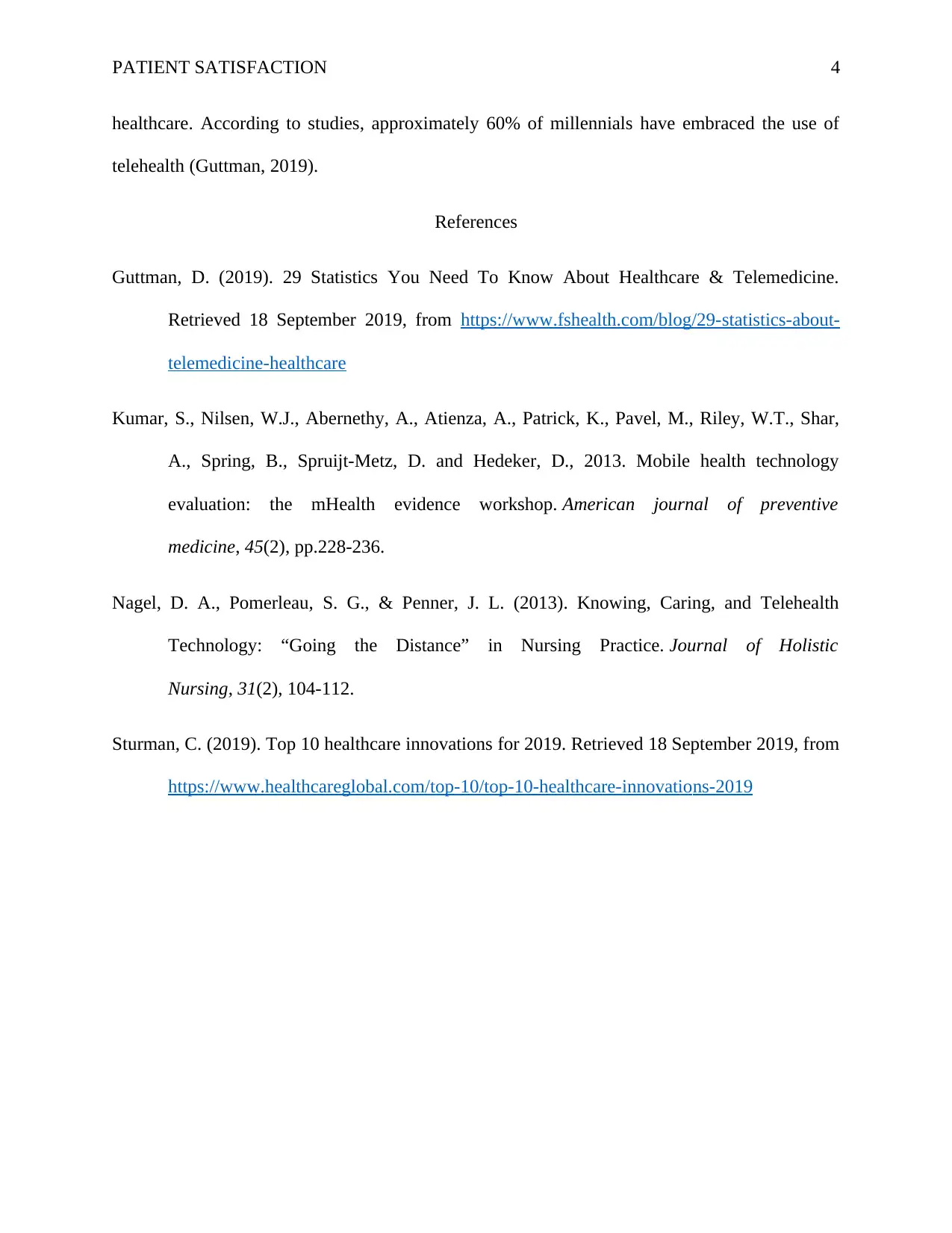Patient Satisfaction Report: Impact of Technology on Patient Care
VerifiedAdded on 2022/10/19
|4
|834
|7
Report
AI Summary
This report examines patient satisfaction in a healthcare setting, using a case study of a patient named Mabel who experienced several issues during her hospital stay due to technological failures. The report highlights the impact of these failures on the quality of care and patient experience. It then proposes two innovative technologies: mobile technology and telehealth, as solutions to improve patient care. Mobile technology, including mobile health apps and mobile-enabled electronic health records, is recommended to provide patients with easy access to their health records and improve patient safety. Telehealth is suggested as a means to remotely access healthcare services, order supplies, and enable doctors to monitor patients remotely. The report also discusses how to evaluate the impact of these technologies, including assessing usability, privacy concerns, efficacy, and cost-effectiveness. Evidence from the literature is provided to support the positive impact of these technologies on client safety and overall healthcare outcomes.
1 out of 4











![[object Object]](/_next/static/media/star-bottom.7253800d.svg)